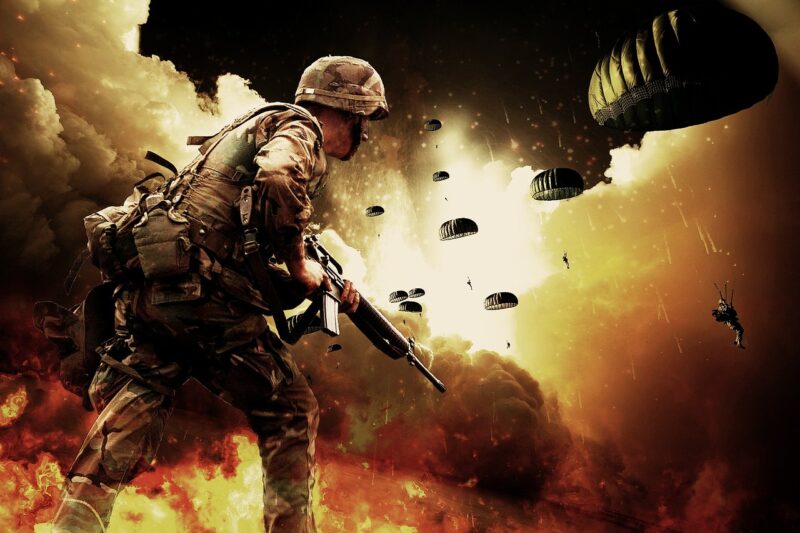
War memorials have long been a significant aspect of a nation’s historical narrative, serving as powerful symbols of remembrance, gratitude, and reflection. From grand monuments that dominate public squares to understated plaques that quietly invite visitors to ponder the past, these sites fulfill a critical role in preserving national history and honoring those who have served.
1. A Glimpse into the Purpose of War Memorials
Across the world, war memorials are erected to pay homage to individuals who have fought, died, or otherwise served in the military. Their functions can be multifaceted, such as:
- Commemoration: They celebrate the lives of those who sacrificed their lives in the line of duty, ensuring that their stories and contributions are not forgotten.
- Education: War memorials often serve as educational tools, providing context and historical insights into conflicts and their repercussions on society.
- Reflection: They provide a space for individuals and communities to reflect upon the costs of war and the importance of peace. Memorials can be places for grief, healing, and unity.
- Civic Engagement: They inspire civic pride and encourage community engagement through commemorative events, ceremonies, and educational initiatives.
As symbols of collective memory, these structures foster a deeper understanding of a nation’s values, struggles, and triumphs.
2. Types of War Memorials
War memorials come in various shapes and sizes, each reflecting the culture and history of the country in which they reside. Key types include:
- Monuments: These towering structures often celebrate victories or honor renowned military leaders. The Lincoln Memorial in Washington, D.C., is a prime example, commemorating Abraham Lincoln’s leadership during the Civil War.
- Cemeteries: Military cemeteries, such as Arlington National Cemetery, house the remains of soldiers and serve as serene places for remembrance and honor.
- Plaques and Tablets: Often located at significant battle sites or public places, these provide historical context and commemorate specific events or individuals.
- Museums: Many countries feature war museums that explore the facets of military conflicts, housing artifacts, documents, and exhibits that narrate stories from various perspectives.
Each type of memorial offers a distinct approach to remembrance, and collectively, they provide a rich tapestry of national history.
3. Historical Significance of War Memorials
War memorials capture key moments in a nation’s history, helping to tell the story of its struggles and achievements. They remind citizens of the costs of war while contributing to ongoing dialogues about conflict, peace, and national identity.
**Example Historical Context:**
During World War I, memorials were often built to honor those who fought in the trenches, exemplifying a shift in recognizing civilians’ roles in warfare. The aftermath of World War II saw a greater emphasis on collective memory, as nations took time to process the human toll of this devastating conflict.
War memorials often evolve over time, adapting to contemporary understandings of war, peace, and memory. The Vietnam Veterans Memorial in Washington, D.C., serves as a prime example of this evolution, offering a space for healing and recognition of the complex narratives surrounding the Vietnam War.
4. Creating Spaces for Memory
Designing a war memorial is an intricate process that reflects the values and sentiments of the society it serves. Factors include:
- Community Involvement: Successful memorials often involve input from the communities they represent, ensuring that the final design resonates with shared values and experiences.
- Symbolism: Designers use symbols, materials, and locations that resonate with the nation’s historical narrative, enhancing the emotional impact of the memorial.
- Accessibility: Effective memorials ensure that they are open and inviting places for reflection and community gatherings, promoting a sense of ownership among citizens.
Examples include the shift toward minimalist designs, as seen in the Vietnam Veterans Memorial, which emphasizes reflection and personal connection through its simplicity.
5. War Memorials in Modern Society
In contemporary society, war memorials are evolving to address issues of representation, inclusivity, and healing. As societies become increasingly diverse, memorials must reflect the multiple narratives that contribute to national history.
This shift includes:
- Inclusive Narratives: Memorials now aim to represent all facets of a conflict, honoring veterans of different races, genders, and backgrounds. This inclusive approach highlights the diverse roles individuals played in history.
- Engagement with New Technologies: Some memorials leverage technology for interactive experiences, such as virtual reality exhibits that enhance understanding of historical events.
- Continued Commemoration: Memorials now play a role in ongoing discussions about war and peace, allowing communities to come together to confront difficult truths and honor those affected.
These modern approaches ensure that war memorials remain relevant and continue to foster dialogue about national identity and remembrance.
6. Conclusion: The Lasting Legacy of War Memorials
War memorials hold a revered place in our societies, acting as sentinels of memory that preserve historical narratives and honor the sacrifices made for peace and freedom. They foster a collective memory that shapes our understanding of history and identity.
As we move forward, it is vital that we recognize the importance of these spaces not just for remembering the past but also for engaging in meaningful discussions about our present and future. Through education, reflection, and active community involvement, we can ensure that war memorials continue to serve as powerful symbols of hope and reconciliation.
In embracing their importance, we keep alive the stories of those who served, ensuring their contributions resonate for generations to come.







